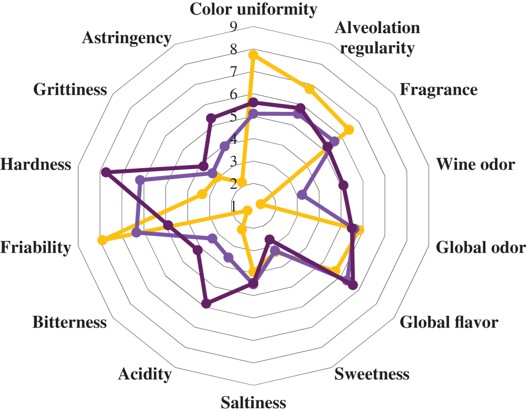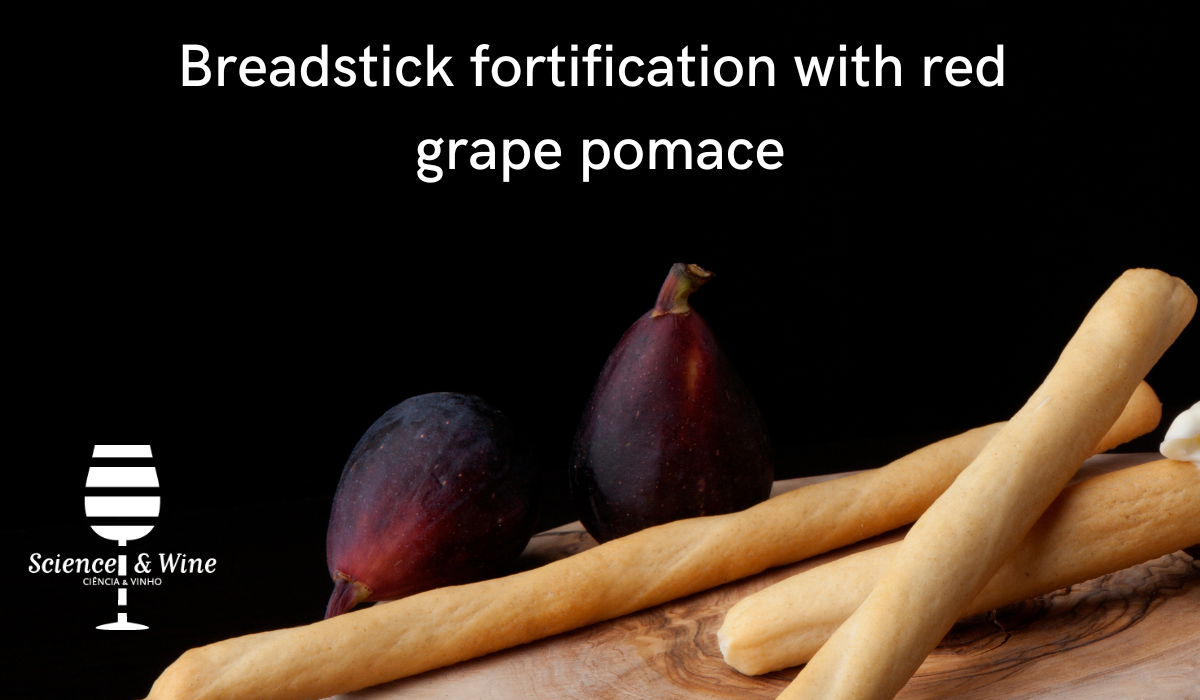In recent years, ready-to-eat foods have grown popular among consumers as a result of their convenience of consumption, ease of preparation and storage. Unfortunately, these foods are often rich in fats and sugars. Otherwise, an increasing segment of consumers considers mainly the nutritional and health aspect during their food expenditure (1). In this context, bakery products, widely consumed worldwide, could represent great potential as carriers of functional ingredients (2, 3) that improve the wholesome global characteristic of these foodstuffs.
Food waste is deemed as a possible source of bioactive molecules with beneficial properties. The FAO estimated that, every year, 1.3 billion tons of food are wasted, such that the 2030 Agenda for Sustainable Development aimed to reduce food loss by promoting a sustainable lifestyle (4) United Nations Member States set the target of dropping food waste by adopting specific measures to reduce food loss throughout the production chain (5). An alternative purpose of food by-products is their incorporation in different food matrices, thus becoming functional food ingredients and a source of bioactive compounds (6, 7).
The wine industry leads to a considerable amount of waste, including grape pomace (GP). One hectolitre of wine produces approximately 17 kg of GP,7 representing a valuable source of bioactive molecules, such as phenolic compounds and dietary fiber (DF). However, even if GP could be considered as a novel food, its extract has been approved by the European Food Safety Authority as a food dye in marmalades, drinks, sweets, ice creams and pharmaceutical products (8).

Polyphenols play a crucial role in preventing a series of non-communicable diseases (9 ). Additionally, DF helps prevent obesity, reduce blood cholesterol levels and improve intestinal transit of stool (10) Food fortification aims at increasing the DF amount and can contribute to achieving the correct daily intake (25–30 g per day) (11). In this context, GP, used as a high added-value ingredient in different food preparations, improves a final product’s nutritional profile and increases its value (12). However, the addition of fibres and polyphenols in bakery products could impact severely on their technological aspects. For example, dietary fibres could alter the gluten network, competing with starch for water absorption and change the rheological properties of doughs and the texture of the final product (6, 7). Therefore, baked food production is an excellent opportunity to develop the ‘circular economy’ concept by exploiting agro-industrial by-products.
Breadsticks are traditional pencil-shaped sticks of bread that have been rolled and baked and are are extensively consumed for their taste, crispiness and extended shelf-life (13). In addition, breadstick is a food preparation that lends itself well to fortification to improve the overall nutritional profile, as demonstrated in previous studies (14-16).
Giada Rainero et al. carried out a study aimed to investigate the effect of the breadstick fortification with powdered grape pomace (GPP), evaluating the changes in the rheological characteristics of GPP enriched doughs and the technological features of the final products. In addition, the research focused on nutritional aspects such as phenolic compounds, dietary fiber content, antioxidant capability, sensory analysis of control and fortified breadsticks (read all at https://doi.org/10.1002/jsfa.11596).

Breadsticks (a) and sections (b) of control breadsticks (BS0) and breadsticks fortified with 5 and 10 g 100 g−1 of grape pomace powder (BS5 and BS10). J Sci Food Agric, Volume: 102, Issue: 6, Pages: 2545-2552, First published: 21 October 2021, DOI: (10.1002/jsfa.11596)
Fortified breadsticks samples were obtained by replacing wheat flour with 0, 5 and 10 g 100 g−1 of powdered GP (GPP). The results of the study highlight the significant impact of GPP addition on the properties of doughs and breadsticks as final products. The replacement of wheat flour by GPP produced more tenacious and less extensible doughs than the control sample, with a significant increase in the P/L value and a decrease in the G value and deformation energy (W). Changes in the rheological characteristics of doughs have led to the production of fortified samples of lower volume and specific volume than the control sample.

Sensory score of quality attributes of control breadsticks (BS0 ) and breadsticks fortified with 5 and 10 g 100 g−1 of grape pomace powder (BS5 and BS10 ). J Sci Food Agric, Volume: 102, Issue: 6, Pages: 2545-2552, First published: 21 October 2021, DOI: (10.1002/jsfa.11596)
In addition, the inclusion of GPP caused acidification of the breadsticks and substantially influenced their color and texture characteristics. Nutritionally, the GPP fortified breadsticks had a higher content of phenolic compounds and dietary fiber. BS10 can benefit from the claim ‘high fiber’ content because it contains more than 6 g 100 g−1 of dietary fiber. In addition, despite fortification with GPP influencing most of the descriptors chosen for sensory analysis, fortified breadsticks showed good overall acceptability. Based on these results, GPP has proved to be a valuable functional ingredient for producing breadsticks rich in fiber and antioxidants and with a good sensory acceptability.
Read all at https://doi.org/10.1002/jsfa.11596
References
- Patel D and Rathod R, Ready to eat food perception, food preferences and food choice: a theoretical discussion. World Wide J Multidiscip Res Dev3:198–205 (2017).
- Martins ZE, Pinho O and Ferreira I, Food industry by-products used as functional ingredients of bakery products. Trends Food Sci Technol67:106–128 (2017).
- Rocchetti G, Rizzi C, Cervini M, Rainero G, Bianchi F, Giuberti Get al., Impact of grape pomace powder on the phenolic bioaccessibility and on in vitro starch digestibility of wheat based bread. Foods10:507 (2021). https://doi.org/10.3390/foods10030507.
- FAO, SiK, Global Food Losses and Food Waste. Unep, Düsseldorf, Germany (2011).
- Melini V, Melini F, Luziatelli F and Ruzzi M, Functional ingredients from Agri-food waste: effect of inclusion thereof on phenolic compound content and bioaccessibility in bakery products. Antioxidants9:1–29 (2020).
- Bianchi F, Tolve R, Rainero G, Bordiga M, Brennan CS and Simonato B, Technological, nutritional, and sensory properties of pasta fortified with agro-industrial by-products: a review. Int J Food Sci Technol56:4356–4366 (2021).
- Tolve R, Simonato B, Rainero G, Bianchi F, Rizzi C, Cervini Met al., Wheat bread fortification by grape pomace powder: nutritional, technological, antioxidant, and sensory properties. Foods10:1–12 (2021).
- Kalli E, Lappa I, Bouchagier P, Tarantilis PA and Skotti E, Novel application and industrial exploitation of winery by-products. Bioresour Bio-process5:46 (2018). https://doi.org/10.1186/s40643-018-0232-6.
- Rothwell JA, Knaze V and Zamora-Ros R, Polyphenols: dietary assessment and role in the prevention of cancers. Curr Opin Clin Nutr MetabCare20:512–521 (2017).
- Soliman GA, Dietary fiber, atherosclerosis, and cardiovascular disease. Nutrients11:1155 (2019).
- Jane M, McKay J and Pal S, Effects of daily consumption of psyllium, oatbran and poly GlycopleX on obesity-related disease risk factors: acritical review. Nutrition57:84–91 (2019).
- Antonić B, Jančíková S, Dordević D and Tremlová B, Grape pomace valorization: a systematic review and meta-analysis. Foods9:1627(2020).
- Sattar D-S, Ali TM, Abbas T and Hasnain A, Textural, bioactive and sensory attributes of breadsticks containing germinated and non-germinated legumes. J Food Chem Nanotechnol04:51–56 (2018).
- Chakraborty P, Bhattacharyya DK and Ghosh M, Extrusion treated meal concentrates of Brassica juncea as functionally improved ingredient in protein and fiber rich breadstick preparation. LWT142:111039(2021).
- El-Hadidy GS, Yousef EA and El-Sattar ASA, Effect of fortification breadsticks with milk thistle seeds powder on chemical and nutritional properties. Asian Food Sci J17:1–9 (2020).
- Petchoo J, Jittinandana S, Tuntipopipat S, Ngampeerapong C and Tangsuphoom N, Effect of partial substitution of wheat flour with resistant starch on physicochemical, sensorial and nutritional properties of breadsticks. Int J Food Sci Technol56:1750–1758 (2021).

